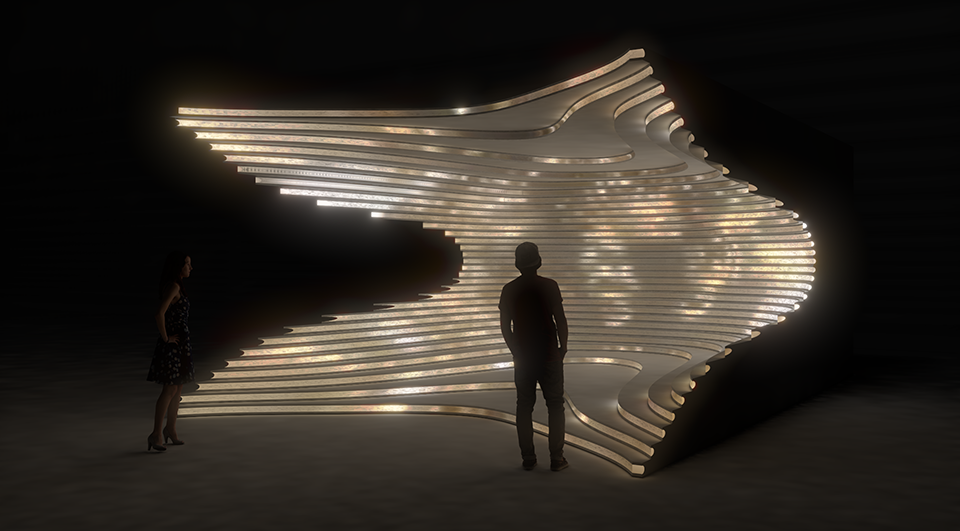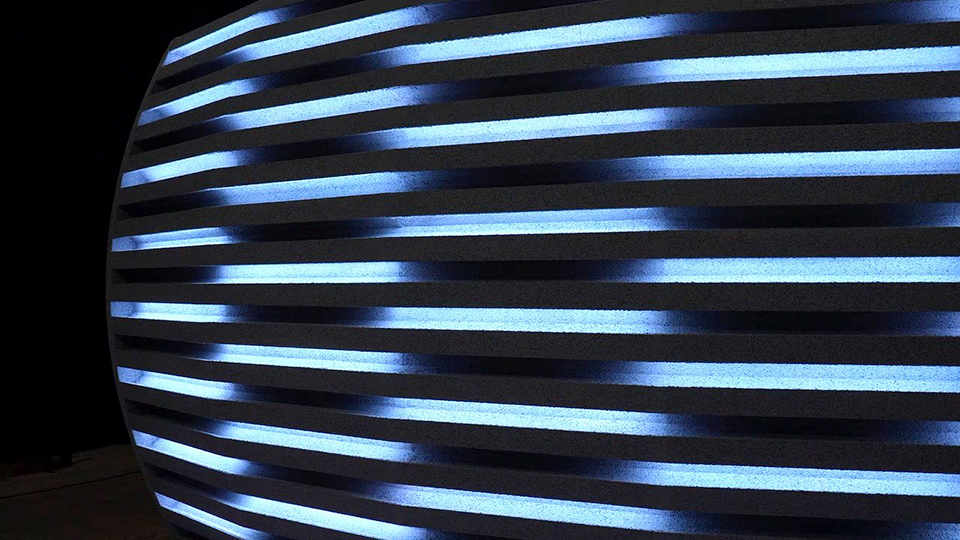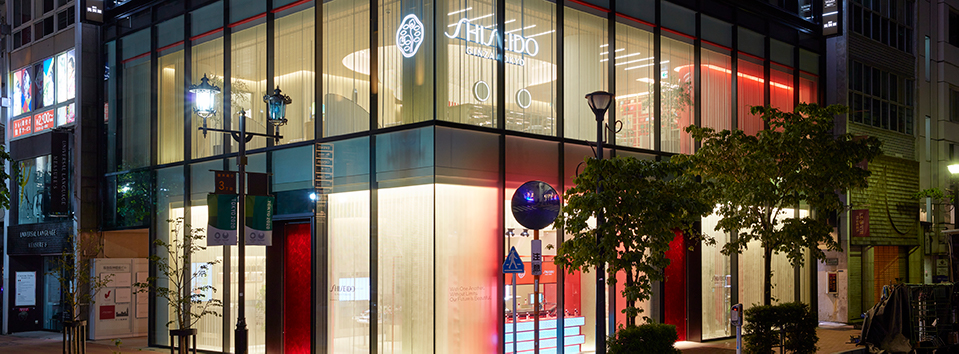Motion Modality
Case Study
BRIEF
“Videos and space,” “Videos and materials,” “Videos and people.” We have devised a concept and mechanism called Motion Modality, in which images are integrated with architecture and the city, to create a place with an atmosphere that resembles natural phenomena.
RESULT
The “Motion Modality/Layer” has been produced and exhibited for the Yebisu International Festival for Art and Alternative Visions in February, 2022.
The Beginning
“Videos and space”; “videos and materials”; “videos and people.” Based on a desire to create places where videos integrate with architecture and cities, with forms that echo natural phenomena, we dreamt up a concept and structure that uses videos to change spatial states (= modes). We gave our creation the name “Motion Modality.”
The Three Features of Motion Modality
Motion Modality has three features.
1: Video illuminations/illumination-like videos
2: Giving form to videos
3: Offering a sense of scale based on people, videos, and space
These three features will demonstrate new approaches and possibilities for videos in spaces, serving as basic concepts so we can use videos to enrich spaces.
1: Video illuminations/illumination-like videos
2: Giving form to videos
3: Offering a sense of scale based on people, videos, and space
These three features will demonstrate new approaches and possibilities for videos in spaces, serving as basic concepts so we can use videos to enrich spaces.
1 | Video Illuminations/Illumination-like Videos
When we look at videos and lighting in cities, we see strong, garish lights that would never exist in the natural world, such as LED vision, which draws the human eye with its quick changes, and showy illuminations twined around trees. We have thought up a new approach to videos, which moves away from “videos that directly enter our eyes through strong luminance” and instead focuses on “soft videos created by the movement of light through a physical material.”
Before electricity was widespread, people in Japan used to use paper doors and paper lanterns, which indirectly diffused the light while hiding its source. In contrast, the West made use of direct lights such as candles. Even today, perhaps this kind of soft “Japanese” lighting is needed in cities. Although videos and illuminations both use light, their roles are different. However, with the evolution of equipment in the last few years, their roles have intermingled: videos have come to be used as architectural lighting, and architectural lighting is animated in a similar way to videos.
From now on, new videos will need a structure that combines the characteristics of both videos and illuminations, which will diffuse/reflect light, and manipulate its behavior. This kind of light has the potential to enrich existing city spaces even more.


2 | Giving Form to Videos
Thanks to the evolution of video equipment, such as projectors and LED displays, videos that were once confined to TV screens have grown larger, and have become so diverse in size and use that they can create parts of buildings and cities, including projection mapping and media façades. The idea of moving from “flat, square videos” to “free-form videos” means giving videos substance and offering them a “form,” so they exist in that environment, rather than using images as superficial decoration.
These new video forms have free and organic shapes; images are characteristically able to fit in and integrate with buildings and cities and, at the same time, have forms that are diverse enough to respond to video diversification.
*Media façade: A façade made by covering the surface of a building with LEDs and using these as a screen.


3 | Videos as Spatial Productions
There are videos of many different sizes all around us, ranging from the small videos we see on our smartphones to huge outdoor images, based on their roles, locations, and the number of people who will view them (see the images below).
When creating videos, we need to adjust the image size to suit each medium (media). If we take a video that is comfortably lit up on a smartphone screen and show it on a huge screen, viewers may find themselves assaulted by an intense flash, like a lightning strike before their eyes. This is a feature of the sense of scale created by videos: images that are larger than a person create a sense of scale reminiscent of scenery, such as mountains or clouds, and a moderate change is more comfortable than a dramatic one.
When it comes to the idea of moving from “videos on screens” to “videos with scenic scale,” we will optimize this feature according to the size of the video, based mainly on its relative relationship with people. Providing two units of measurement—pixels, the dimensions of videos, and mm, the dimensions of space—will bridge the gap between bits (digital information) and atoms (physical materials).
*Scale: Here, scale is used to mean “size” (dimensions).
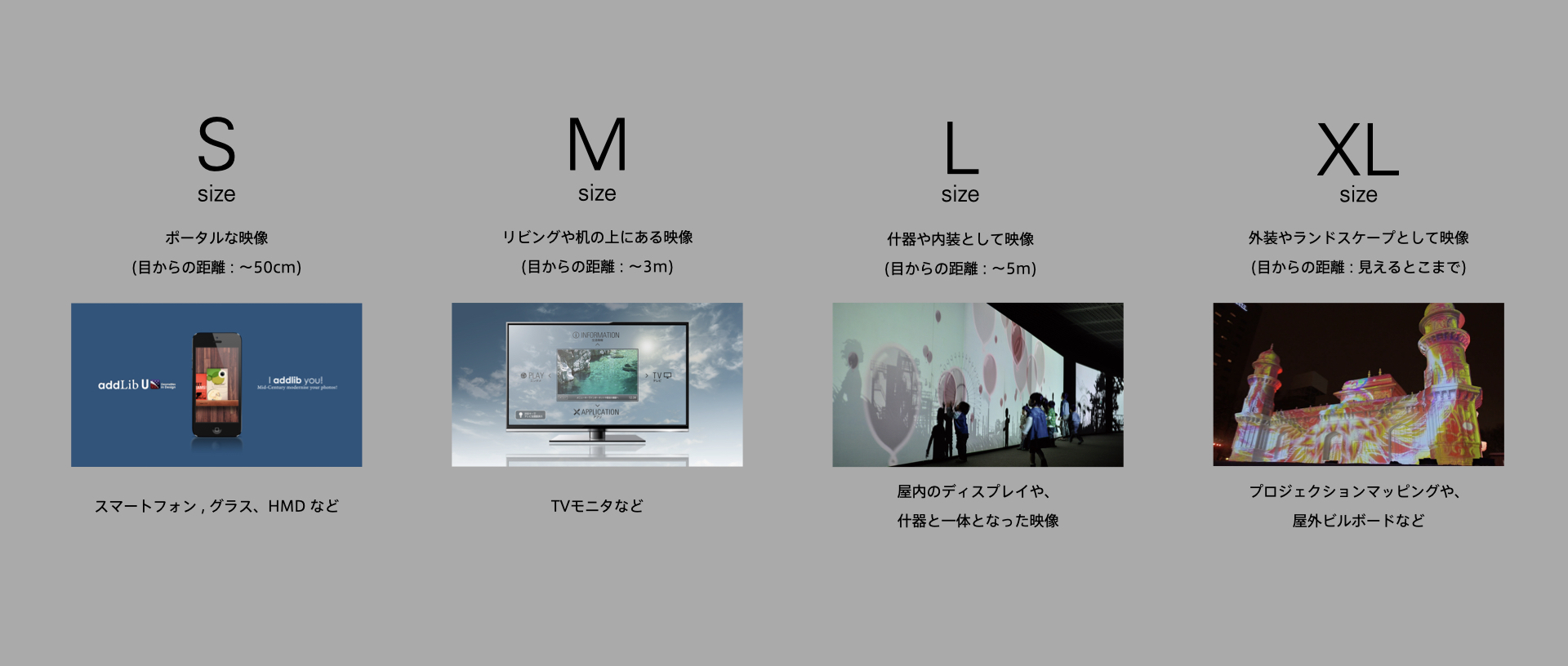


Where Does Motion Modality Fit In?
Motion Modality falls mainly in the scope of spatial production (spaces augmented by light). It is a system that is in-between videos and illumination, for events and scenery that exist outside the screen.
The tree diagram below shows the categories of WOW’s work. We took the opportunity presented by our first work, “Motion Texture (2006),” which enabled people to experience videos as an “existing image,” to expand the domain of videos from inside a screen (videos to be viewed) to outside a screen (videos to be experienced) when creating WOW works. When it comes to spatial production, WOW excels at four-dimensional spatial production, which adds the axis of time to an existing space. Characteristically, this involves giving new value to spaces by introducing changes to places that people merely pass through.
The tree diagram below shows the categories of WOW’s work. We took the opportunity presented by our first work, “Motion Texture (2006),” which enabled people to experience videos as an “existing image,” to expand the domain of videos from inside a screen (videos to be viewed) to outside a screen (videos to be experienced) when creating WOW works. When it comes to spatial production, WOW excels at four-dimensional spatial production, which adds the axis of time to an existing space. Characteristically, this involves giving new value to spaces by introducing changes to places that people merely pass through.
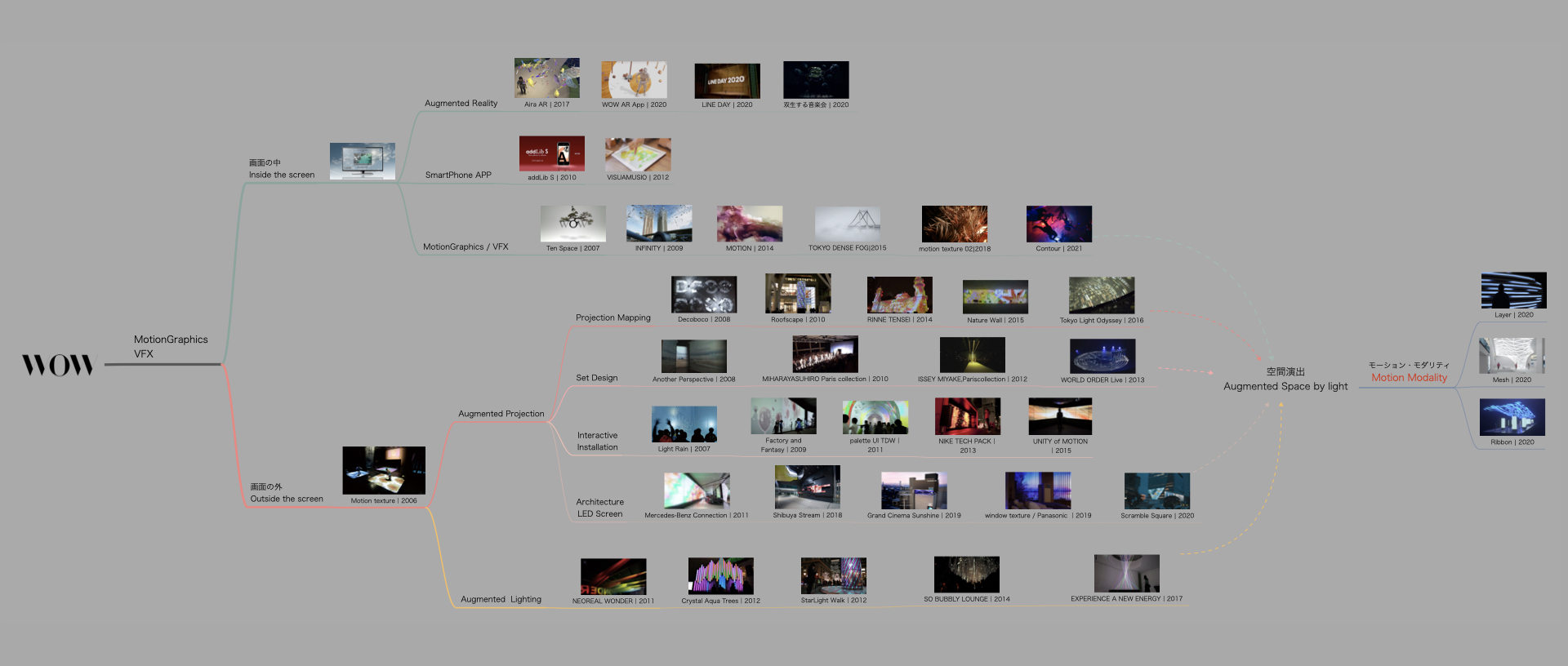
Three Types of Motion
The diagram below shows the relationship between three types of motion: Motion Graphics, Motion Texture, and Motion Modality. Time sits at the very center of all the circles; by moving (or changing) a subject from point A to point B, time is added to the subject, which gives the subject life (anima). Motion Graphics sees the creation of images by making graphics move. Motion Texture refers to adding texture to an environment through videos, giving them substance. Motion Modality involves giving life (anima) to an unmoving building or space by causing changes to its spatial state.
*The root of “animation” comes from the Latin word “anima,” meaning “spirit” or “life,” and means to breathe life into something still and lifeless by giving them movement.
*The root of “animation” comes from the Latin word “anima,” meaning “spirit” or “life,” and means to breathe life into something still and lifeless by giving them movement.


The Form of Videos
Motion Modality is a system that gives “form” to videos by treating them as materials made of light; it manipulates the behavior of light, adapts videos to a physical object, and stimulates the modality of a space.
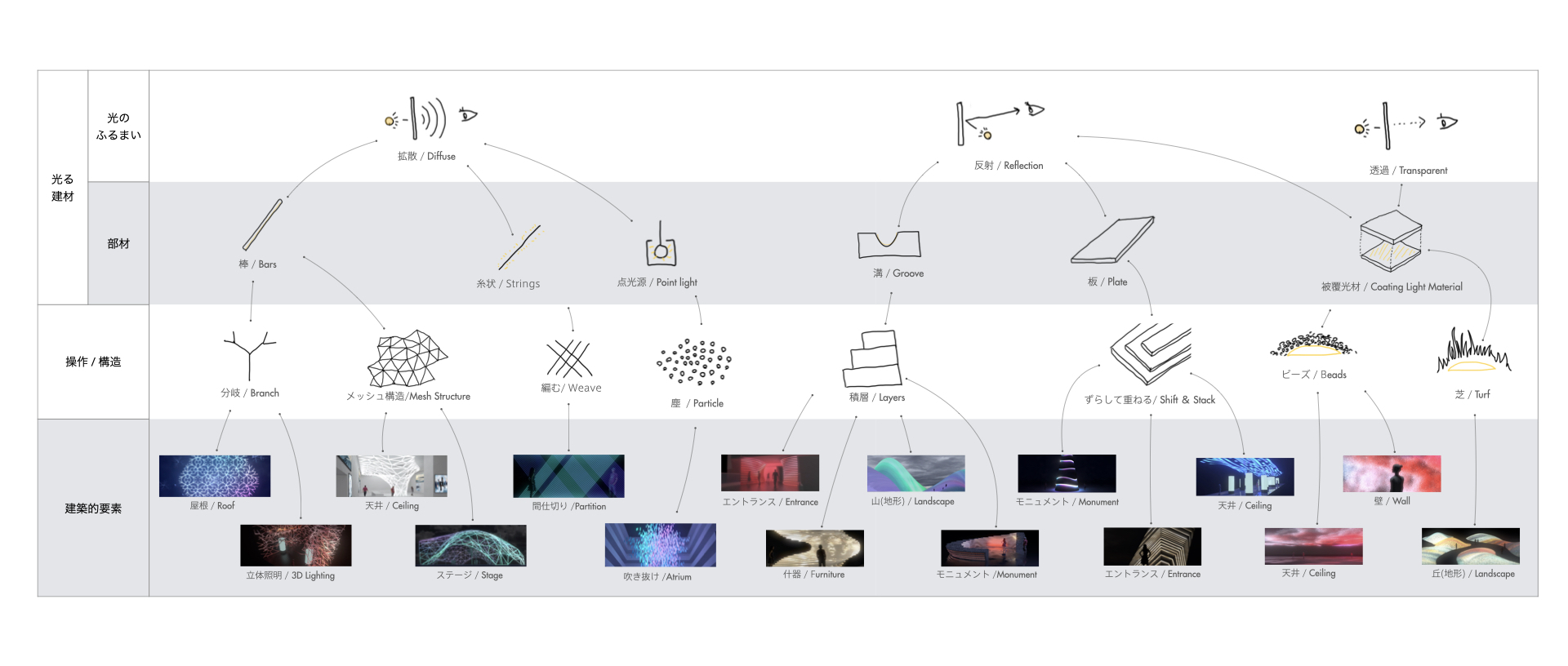
Summary
Motion Modality is simultaneously a system that stimulates the modality of a space and a style/concept of videos in a space. We aim to use the potential of videos to create even richer environments for public/business/cultural facilities and amusement facilities in response to the need for rapidly diversifying architectural illumination. If you wish to know more, please inquire via our Contact Form .


